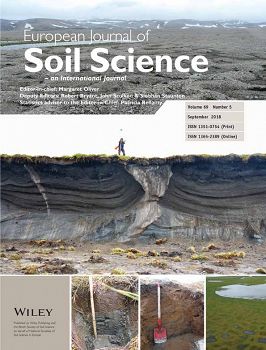Guo et al., 2018
Occurrence of subsurface lateral flow in the Shale Hills Catchment indicated by a soil water mass balance method
Guo, L., Fan, B., Zhang, J., and Lin, H. (2018)
European Journal of Soil Science
Abstract
Subsurface lateral flow (SLF) contributes substantially to hillslope runoff. However, because of the lack of appropriate methods, field investigation of SLF at the hillslope and catchment scales has been limited. Recently, high‐frequency soil moisture monitoring has been tested to characterize SLF. This study presented a simple approach to determine SLF based on soil water mass balance and compared this method with an established approach that used the depth‐specific soil moisture response time to precipitation to identify preferential flow. The new method defined the occurrence of SLF when the increase in soil water storage was greater than the accumulated quantity of effective precipitation during a rain event. We applied this method to a 10‐minute resolution soil moisture dataset collected over 3 years from nine soil profiles along a concave hillslope. We found that (i) SLF frequency derived by the proposed method matched well with preferential flow frequency obtained by the established method (r > 0.9), (ii) precipitation and initial soil wetness together controlled the generation of SLF, precipitation intensity determined whether or not the hillslope produced SLF and the quantity of precipitation governed the spatial extent of SLF, and (iii) topographic and small‐scale soil features led to spatially different frequencies of SLF during small storms. Identifying SLF from a soil moisture time series over an entire rain event complements the established method based on soil moisture dynamics at the beginning of an event. Applying both methods creates the potential to measure SLF frequency and vertical preferential flow frequency, respectively. Soil moisture sensor networks have improved the large‐scale investigation of such preferential flows.
Citation
Guo, L., Fan, B., Zhang, J., and Lin, H. (2018): Occurrence of subsurface lateral flow in the Shale Hills Catchment indicated by a soil water mass balance method. European Journal of Soil Science. DOI: 10.1111/ejss.12701
 This Paper/Book acknowledges NSF CZO grant support.
This Paper/Book acknowledges NSF CZO grant support.
Explore Further




